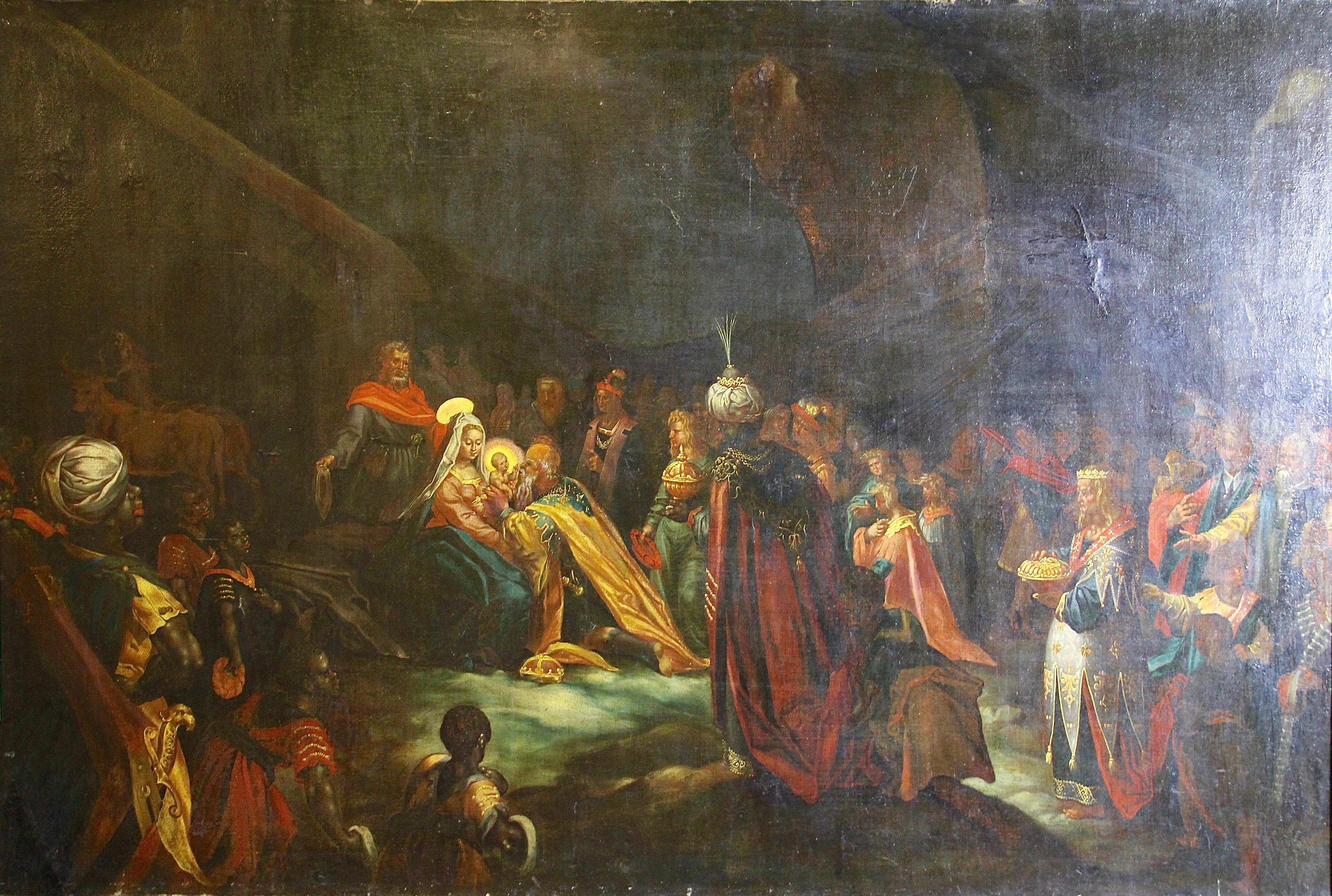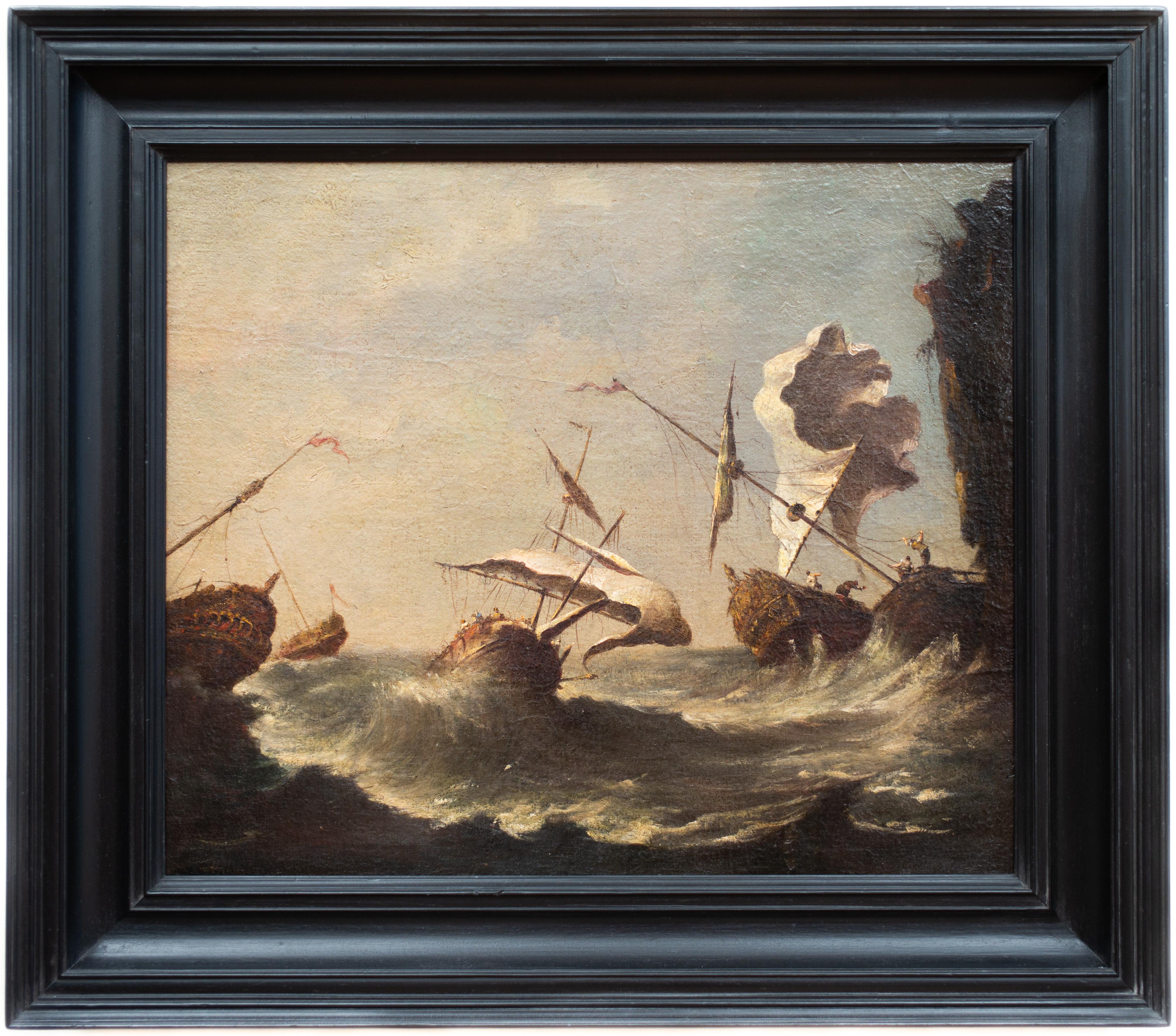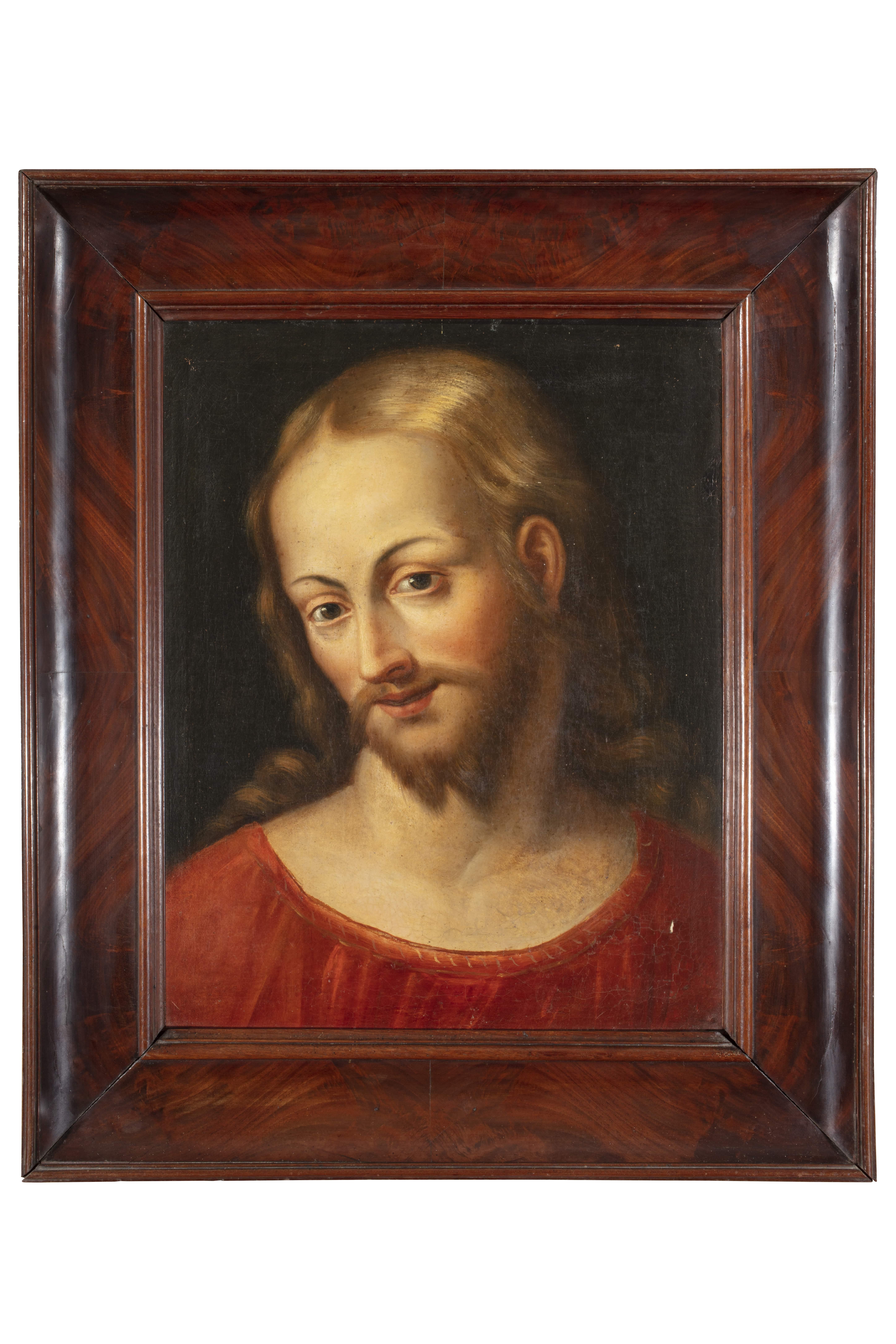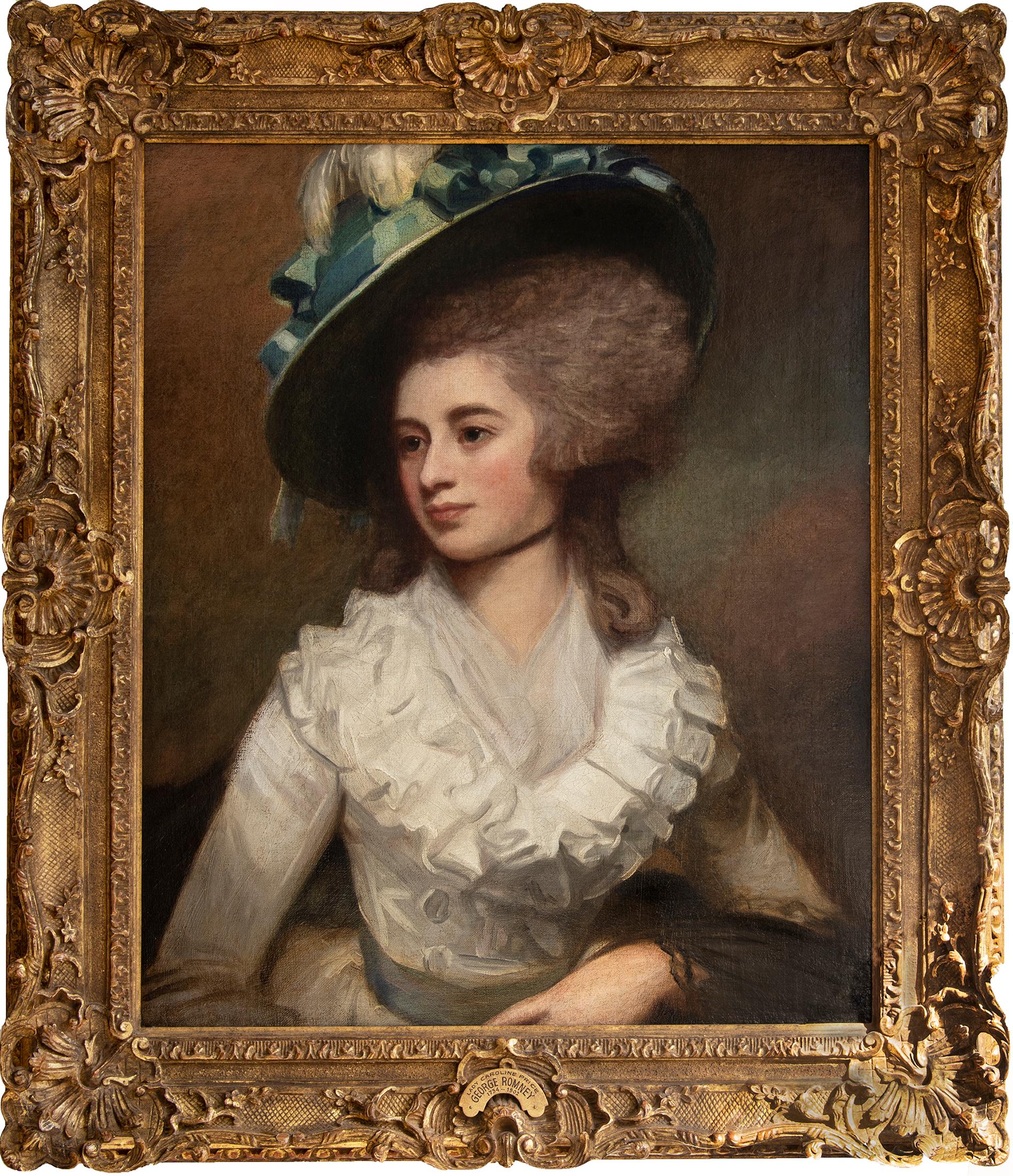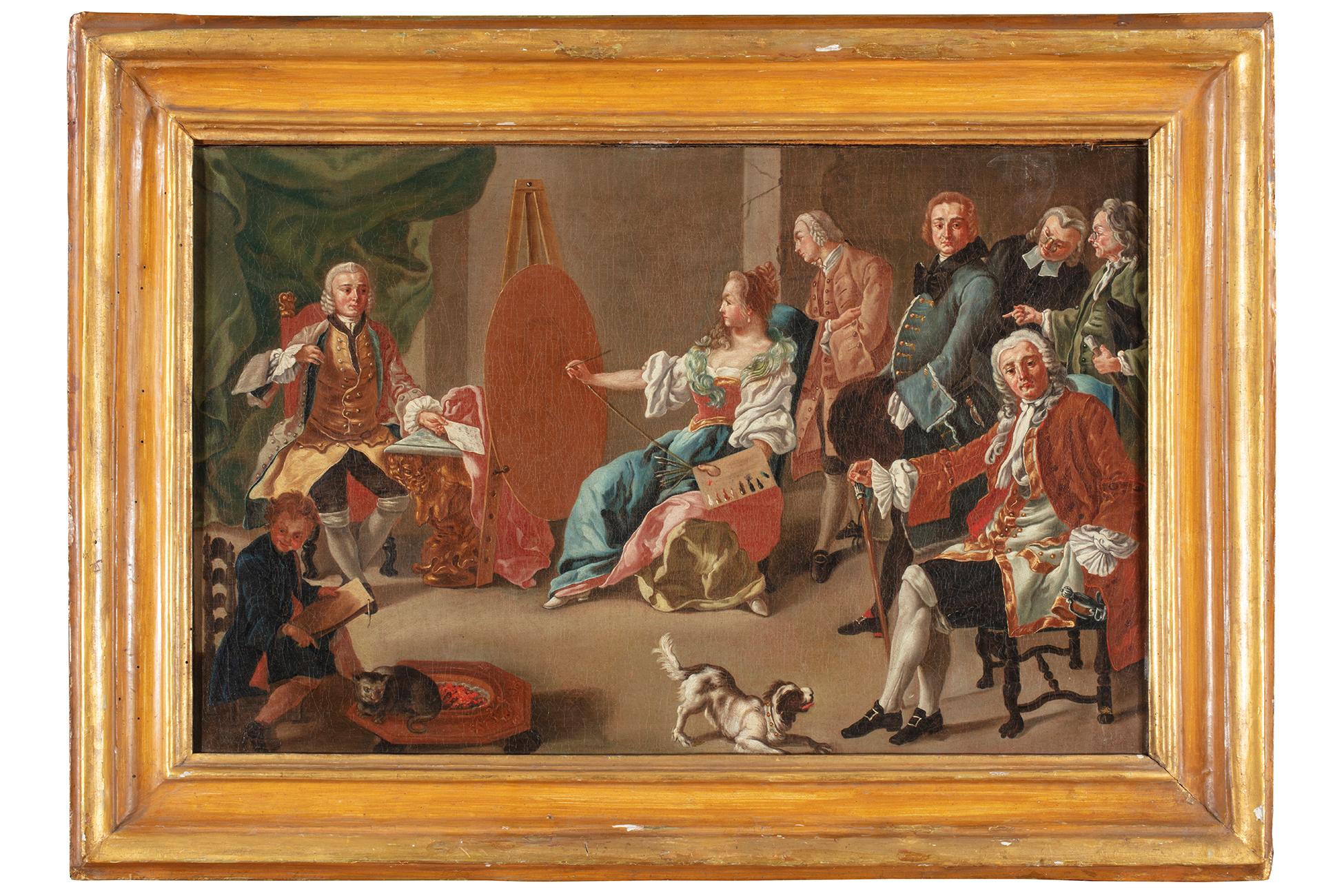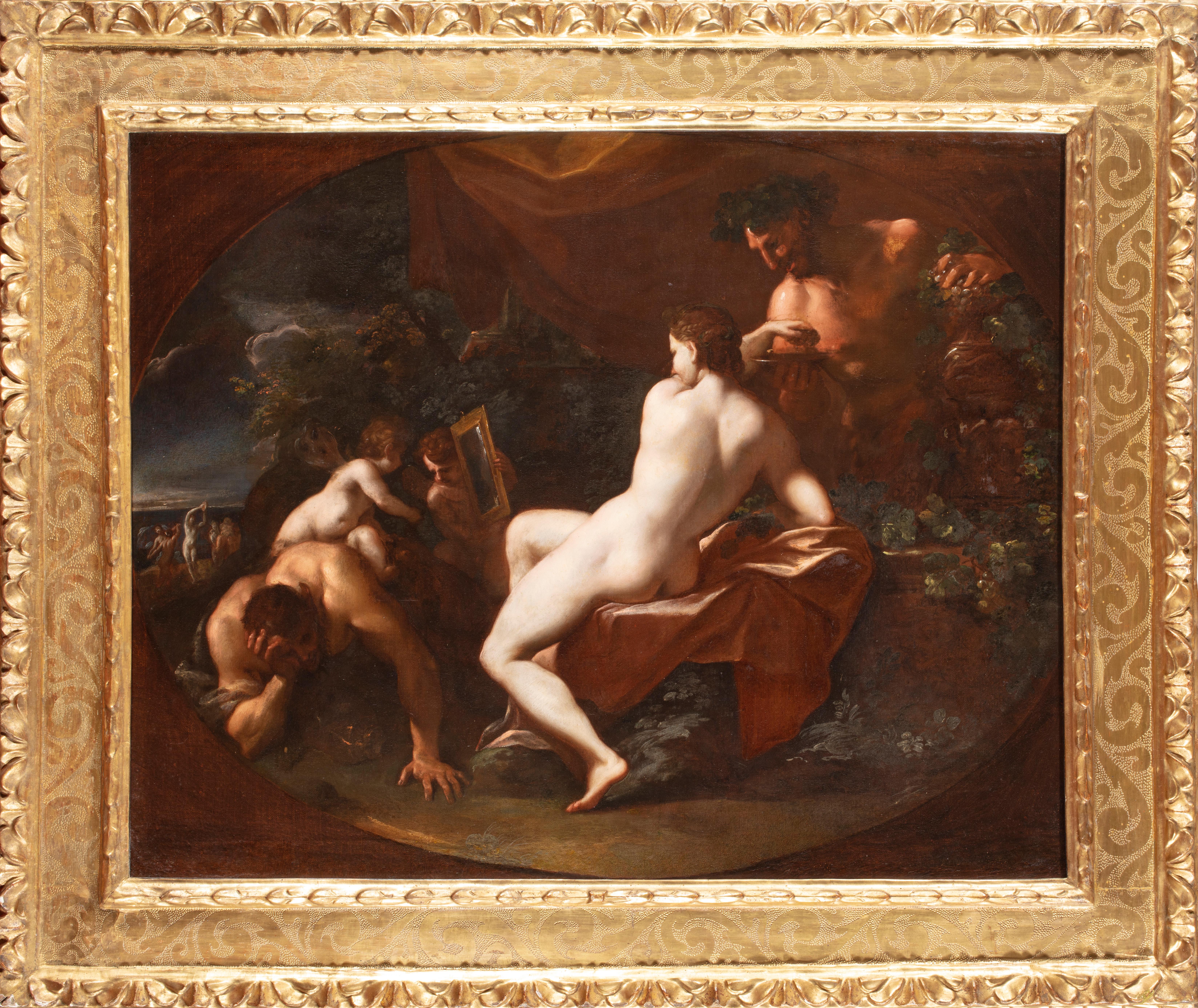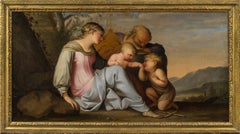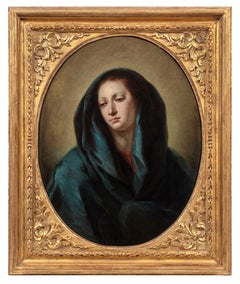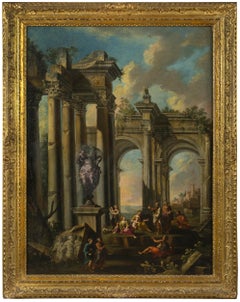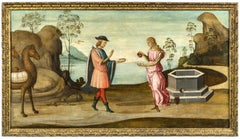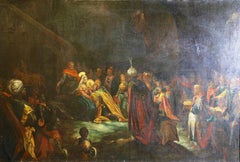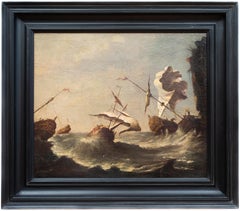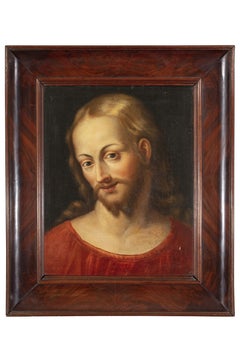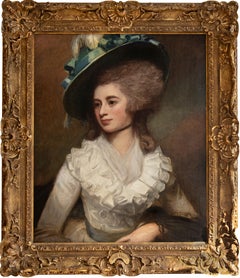Items Similar to Julius Caesar on Horseback
Want more images or videos?
Request additional images or videos from the seller
1 of 3
Julius Caesar on Horseback1594
1594
About the Item
Provenance: Private Collection, South America
Antonio Tempesta began his career in Florence, working on the decoration of the Palazzo Vecchio under the direction of Giorgio Vasari. He was a pupil first of Santi di Tito, then of Jan van der Straet, called Stradanus—two of the most prominent late Mannerist painters active in Florence. In the 1570s and 1580s Tempesta worked for a series of important Roman patrons, mostly painting large fresco decorations. These include work in the Vatican Palace and in the Church of San Stefano Rotondo, both for Pope Gregory XIII; the Roman palaces of the Giustiniani and Rospigliosi; at the Villa Lante in Bagnaia, the Palazzo Farnese in Caprarola, and the Villa d’Este in Tivoli. However, Tempesta’s fame rests less on his large fresco decorations than on his work as both a printmaker and as a painter of battle scenes. Between 1589 and 1627 Tempesta produced over one thousand prints, including single sheets and series, etchings and engravings of hunting scenes, topographical views, as well as historical and mythological subjects.
The present work relates to an etching of 1594 by Tempesta depicting Julius Caesar on horseback (Fig. 1), part of his series “The First Twelve Roman Caesars.” So much of the artist’s output was as a printmaker of etchings and engravings, but while his prints were distributed throughout Europe, Tempesta’s paintings remained largely in the collections of his Roman patrons. The relationship of our painting to the print is unclear. Was it Tempesta’s own model, which he later translated into a print? Or was the monumental painting based on the print? The presence of the battle scene in the painting --a vignette typical of Tempesta’s compositions (and not included in the etching)-- suggests that our painting was likely primary. The canvas is monumental in scale and is adorned with an original 17th-century frame, of typical Bolognese style. Julius Caesar is seen on a rearing horse seen from behind. He is dressed in armor and wields a military baton as he overlooks a battle unfolding in the background. No doubt painted for a large palace or villa, this painting evokes Julius Caesar’s position as a heroic figure in the Renaissance –as general, as author, and as emperor.
- Attributed to:Antonio Tempesta (1555 - 1630, Italian)
- Creation Year:1594
- Dimensions:Height: 79.5 in (201.93 cm)Width: 62 in (157.48 cm)
- Medium:
- Movement & Style:
- Period:
- Condition:
- Gallery Location:New York, NY
- Reference Number:1stDibs: LU10213350192
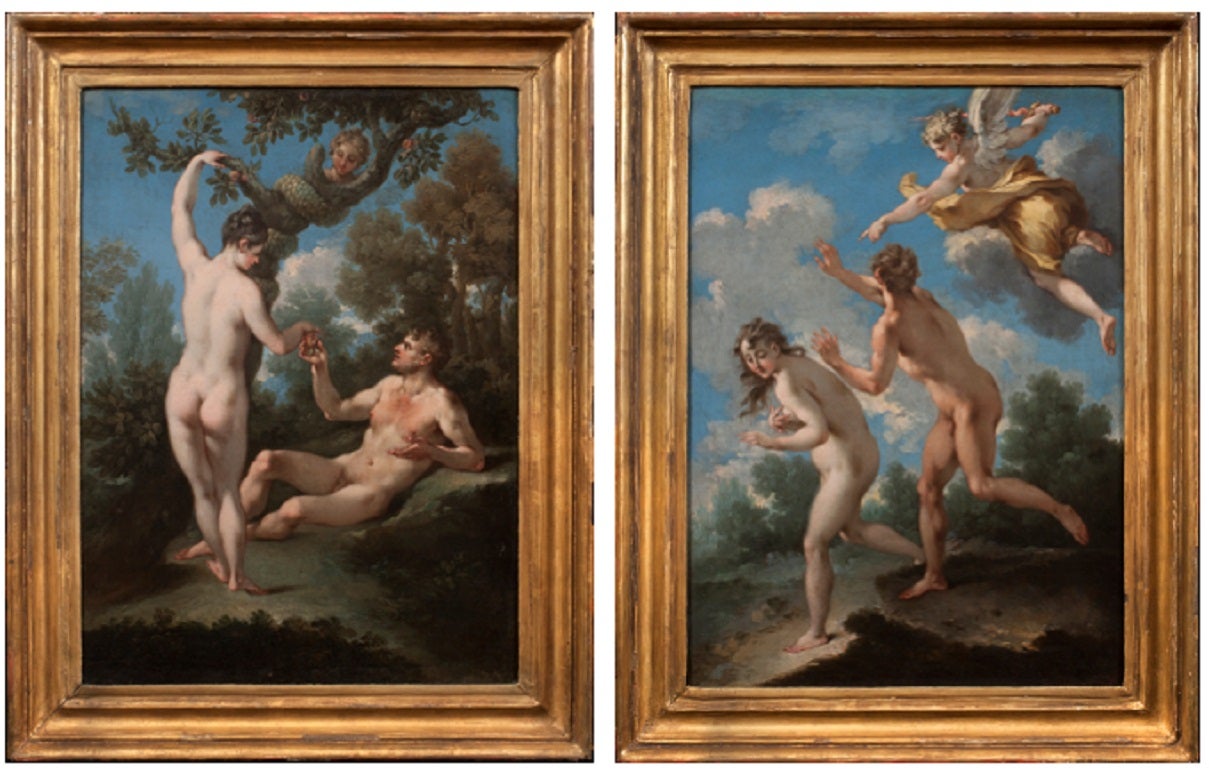
About the Seller
5.0
Recognized Seller
These prestigious sellers are industry leaders and represent the highest echelon for item quality and design.
Established in 1997
1stDibs seller since 2012
19 sales on 1stDibs
Typical response time: 12 hours
- ShippingRetrieving quote...Shipping from: New York, NY
- Return Policy
Authenticity Guarantee
In the unlikely event there’s an issue with an item’s authenticity, contact us within 1 year for a full refund. DetailsMoney-Back Guarantee
If your item is not as described, is damaged in transit, or does not arrive, contact us within 7 days for a full refund. Details24-Hour Cancellation
You have a 24-hour grace period in which to reconsider your purchase, with no questions asked.Vetted Professional Sellers
Our world-class sellers must adhere to strict standards for service and quality, maintaining the integrity of our listings.Price-Match Guarantee
If you find that a seller listed the same item for a lower price elsewhere, we’ll match it.Trusted Global Delivery
Our best-in-class carrier network provides specialized shipping options worldwide, including custom delivery.More From This Seller
View AllHoly Family with the Infant St. John the Baptist
Located in New York, NY
Lubin Baugin
(Pithiviers 1610 – 1663 Paris)
Holy Family with the Infant Saint John the Baptist
Oil on canvas
22 x 42 ¼ inches (55.9 x 107.3 cm)
Provenance:
Marcello and Carlo ...
Category
17th Century Old Masters Figurative Paintings
Materials
Oil, Canvas
Head of the Virgin
Located in New York, NY
Provenance: Private Collection, Paraguay.
This unpublished Head of the Virgin is a new addition to the rich corpus of paintings by Giovanni Battista Tiepolo. While the artist freque...
Category
18th Century Old Masters Figurative Paintings
Materials
Oil, Canvas
An Architectural Capriccio with the Preaching of an Apostle
By Giovanni Paolo Panini
Located in New York, NY
Provenance: Santambrogio Antichità, Milan; sold, 2007 to:
Filippo Pernisa, Milan; by whom sold, 2010, to:
Private Collection, Melide, Switzerland
De Primi Fine Art, Lugano, Switzerland; from whom acquired, 2011 by:
Private Collection, Connecticut (2011-present)
Literature: Ferdinando Arisi, “Ancora sui dipinti giovanili del Panini,” Strenna Piacentina (Piacenza, 2009): pp. 48, 57, 65, fig. 31, as by Panini
Ferdinando Arisi, “Panini o Ghisolfi o Carlieri? A proposito dei dipinti giovanili,” Strenna Piacentina, (Piacenza, 2010), pp. 100, 105, 116, fig. 101, as an early work by Panini, a variant of Panini’s painting in the Museo Cristiano, Esztergom, Hungary.
This architectural capriccio is one of the earliest paintings by Giovanni Paolo Panini, the preeminent painter of vedute and capricci in 18th-century Rome. The attribution to Panini has been endorsed by Ferdinando Arisi, and a recent cleaning of the painting revealed the artist’s signature in the lower right. Like many of his fellow painters working in Rome during his day, Panini was not a native of the Eternal City. He first trained as a painter and stage designer in his hometown of Piacenza and moved to Rome at the age of 20 in November 1711 to study figure painting. Panini joined the workshop of Benedetto Luti (1666-1724) and from 1712 was living on the Piazza Farnese. Panini, like many before and after him, was spellbound by Rome and its classical past. He remained in the city for the rest of his career, specializing in depicting Rome’s most important monuments, as well as creating picturesque scenes like this one that evoked the city’s ancient splendor.
The 18th century art historian Lione Pascoli, who likely knew Panini personally, records in his 1730 biography of the artist that when Panini came to Rome, he was already “an excellent master and a distinguished painter of perspective, landscape, and architecture.” Panini’s earliest works from this period still show the evidence of his artistic formation in Piacenza, especially the influence of the view painter Giovanni Ghisolfi (1623-1683). However, they were also clearly shaped by his contact in Rome with the architectural capricci of Alberto Carlieri...
Category
18th Century Old Masters Figurative Paintings
Materials
Oil, Canvas
Rebecca at the Well
Located in New York, NY
Provenance:
Dr. James Henry Lancashire, Manchester-by-the-Sea, Massachusetts, by 1925; probably by descent to:
Private Collection, Cumberland Foreside, Maine, until 2018
This unpublished panel is a characteristic work of the Master of the Apollo and Daphne Legend, an anonymous Florentine painter in the circle of Bartolommeo di Giovanni, Domenico Ghirlandaio, and Sandro Botticelli. The artistic personality of the Master of the Apollo and Daphne Legend was independently recognized by Everett Fahy and Federico Zeri at roughly the same moment in time. Fahy originally dubbed this artist the Master of the Ryerson Panels but later adopted Zeri’s name for the artist, which derives from his eponymous works from the Samuel H. Kress collection (Figs. 1-2). Fahy posited that the artist was most likely a pupil of Ghirlandaio active from roughly 1480 to 1510, and that he may be identifiable with one of Ghirlandaio’s documented pupils to whom no works have been securely attributed, such as Niccolò Cieco, Jacopo dell’Indaco, or Baldino Baldinetti. The present painting was first attributed to this master by Everett Fahy in 1989, who became aware of its existence only after publishing his definitive studies on the artist.
The surviving body of work by the Master of the Apollo and Daphne Legend is largely composed of series of panels treating the same theme. In addition to the works illustrating the legend of Apollo and Daphne, there are also series on the themes of Susanna and the Elders and the story of Saint Joseph, among others. The subject of the present panel is drawn from Genesis 24, the story of Isaac. It is possible that our painting relates to another work by the artist depicting the Sacrifice of Isaac formerly in the collection of E. A. McGuire in Dublin, Ireland (Fig. 3), and that these two panels were originally part of a decorative scheme based on the story of Isaac.
Although the Master’s paintings of this type have traditionally been considered painted fronts of wedding chests, known as cassoni, the scale of these paintings and the fact that they are often part of a series indicates that they are more likely spalliera panels—paintings set into furniture or the wainscoting of a room. The biblical episode depicted in this painting centers on the theme of marriage, which suggests that this work was likely commissioned for the domestic interior of a newly married couple. The Master has transcribed into paint even the minute details of this Old Testament story, in which Abraham sends a servant to travel by camel to the land of his father and seek out a wife for his son Isaac. The servant is here shown at the well...
Category
15th Century and Earlier Old Masters Figurative Paintings
Materials
Tempera, Oil, Wood Panel
Portrait of a Man
Located in New York, NY
Provenance:
with Leo Blumenreich and Julius Böhler, Munich, 1924
Dr. Frederic Goldstein Oppenheimer (1881-1963), San Antonio, Texas; by whom given to:
Abraham M. Adler, New York, until 1985; thence by descent to the present owners
While old inscriptions on the verso of this panel propose its author to be Hans Holbein and the sitter Sir John More—a lawyer, judge, and the father of Sir Thomas More—this fine portrait has long been recognized to be by a Flemish hand. Max Friedländer gave the painting to Bernard van Orley (1487/1491 – 1541) in 1924, but did not include it in the volume dedicated to the artist in his Early Netherlandish Paintings...
Category
16th Century Old Masters Portrait Paintings
Materials
Oil, Panel
$52,500
Esther in the Women's House of Ahasuerus
By Artus Wolfort
Located in New York, NY
Born in Antwerp, Artus Wolffordt received his training in Dordrecht where he became a master in 1603 at the age of twenty-two. He returned to his native city in 1615 and initially worked as an assistant to Otto van Veen...
Category
17th Century Old Masters Paintings
Materials
Oil, Panel
You May Also Like
Antique painting. "Kings from all over the world in Bethlehem". Christian scene.
Located in Berlin, DE
Huge and very decorative castle painting.
Antique oil painting. Probably 18th century.
"Kings from all over the world in Bethlehem".
Christian scene.
Canvas relined.
Big, heavy fr...
Category
18th Century Old Masters Figurative Paintings
Materials
Canvas, Oil
Shipping in Stormy Waters, Attributed to Italian Artist Francesco Guardi
By Francesco Guardi
Located in Stockholm, SE
The splendour of the tragic sea
Francesco Guardi and maritime painting in Venetian art
No Venetian painter was a stranger to the sea. After all, Venice was not only one of the most prominent ports of the Mediterranean, but indeed a city literally submerged in the ocean from time to time. Curiously however, the famous Venetian school of painting showed little interest in maritime motifs, favouring scenes from the iconic architecture of the city rather than seascapes. That is why this painting is a particularly interesting window into not only the painter Francesco Guardi himself – but to the significance of the element of water in art history, in absence as well as in the centre of attention.
Whether it be calm, sunny days with stunning views of the palaces alongside the canals of Venice or – more rarely – stormy shipwrecking tragedies at sea, water as a unifying element is integral to the works of painter Francesco Guardi (1712–1793). During his lifetime, Venetian art saw many of its greatest triumphs with names like Tiepolo or Canaletto gaining international recognition and firmly establishing Venice as one of the most vibrant artistic communities of Europe. While the city itself already in the 18th century was something of an early tourist spot where aristocrats and high society visited on their grand tour or travels, the artists too contributed to the fame and their work spread the image of Venice as the city of romance and leisure to an international audience, many of whom could never visit in person.
Still today, the iconic image of Venice with its whimsical array of palaces, churches and other historic buildings is much influenced by these artists, many of whom have stood the test of time like very well and remain some of the most beloved in all of art history. It was not primarily subtility, intellectual meanings or moral ideals that the Venetian art tried to capture; instead it was the sheer vibrancy of life and the fast-paced city with crumbling palaces and festive people that made this atmosphere so special. Of course, Venice could count painters in most genres among its residents, from portraiture to religious motifs, history painting and much else. Still, it is the Vedutas and views of the city that seems to have etched itself into our memory more than anything else, not least in the tradition of Canaletto who was perhaps the undisputed master of all Venetian painters.
Born into his profession, Francesco lived and breathed painting all his life. His father, the painter Domenico Guardi (1678–1716) died when Francesco was just a small child, yet both he and his brothers Niccolò and Gian Antonio continued in their fathers’ footsteps. The Guardi family belonged to the nobility and originated from the mountainous area of Trentino, not far from the Alps. The brothers worked together on more challenging commissions and supported each other in the manner typical of family workshops or networks of artists. Their sister Maria Cecilia married no other than the artist Giovanni Battista Tiepolo himself, linking the family to the most renowned Venetian name of the time. During almost a decade, Guardi worked in the studio of Michele Giovanni Marieschi, sometimes simply known as Michiel, a painted similar in both style and motif. Canaletto is, however, the artist Guardi is most often compared to since they shared a mutual fascination for depicting the architecture and cityscape of Venice.
During the course of his career, Guardi tried his hand in many different genres. He was as swift in painting landscapes, Vedutas of Venice, sacred motifs, interiors and architectural compositions as he was in a number of other motifs. His style is typical of the Venetian school but also distinct and personal once we look a little closer. There is an absolute certainty in the composition, the choice of which sometimes feels like that of a carefully calculated photograph – yet it is also very painterly, in the best sense of the word: fluid, bold, sensitive and full of character. The brushwork is rapid, intense, seemingly careless and extraordinarily minute at the same time; fresh and planned in a very enjoyable mixture. His interiors often capture the breath-taking spacious glamour of the palaces and all their exquisite decor. He usually constructed the motif through remarkably simple, almost spontaneous yet intuitively precise strokes and shapes. The result was a festive, high-spirited atmospheric quality, far away from the sterile and exact likeness that other painters fell victim to when trying to copy Canaletto.
The painting here has nothing of the city of Venice in it. On the contrary, we seem to be transported far away into the solitary ocean, with no architecture, nothing to hold on to – only the roaring sea and the dangerous cliffs upon which the ships are just moments away from being crushed upon. It is a maritime composition evoking both Flemish and Italian precursors, in the proud tradition of maritime painting that for centuries formed a crucial part of our visual culture.
This genre of painting is today curiously overlooked, compared to how esteemed and meaningful it was when our relationship to the sea was far more natural than it is today. When both people and goods travelled by water, and many nations and cities – Venice among them – depended entirely on sea fare, the existential connection to the ocean was much more natural and integrated into the imagination. The schools and traditions of maritime art are as manifold as there are countries connected to the sea, and all reflect the need to process the dangers and wonders of the ocean.
It could symbolize opportunity, the exciting prospects of a new countries and adventures, prospering trade, beautiful scenery as well as war and tragedy, loss of life, danger and doom. To say that water is ambivalent in nature is an understatement, and these many layers were something that artists explored in the most wondrous ways. Perhaps it takes a bit more time for the modern eye to identify the different nuances and qualities of historic maritime paintings, they may on first impression seem hard to differentiate from each other. But when allowing these motifs to unfold and tell stories of the sea in both fiction and reality – or somewhere in between – we are awarded with an understanding of how the oceans truly built our world.
In Guardi’s interpretation, we see an almost theatrically arranged shipwrecking scene. No less than five ships are depicted right in the moment of utter disaster. Caught in a violent storm, the waves have driven them to a shore of sharp cliffs and if not swallowed by the waves, crushing against the cliffs seems to be the only outcome. The large wooden ships are impressively decorated with elaborate sculpture, and in fact relics already during Guardi’s lifetime. They are in fact typical of Dutch and Flemish 17th century ships, giving us a clue to where he got the inspiration from. Guardi must have seen examples of Flemish maritime art, that made him curious about these particular motifs. One is reminded of Flemish painters like Willem van de Velde and Ludolf Backhuysen, and this very painting has indeed been mistakenly attributed to Matthieu van Plattenberg...
Category
18th Century Old Masters Landscape Paintings
Materials
Canvas, Oil
$46,421 Sale Price
32% Off
Free Shipping
16th Century by Bernardino Detti Face of Christ Oil on Canvas
Located in Milano, Lombardia
Bernardino Detti (Pistoia, Italy, 1498 - 1572)
Title: Face of Christ
Medium: Oil on canvas
Dimensions: without frame 41 x 32 cm - with frame 47 x 55.5 cm
Antique box frame made of solid wood and walnut burl.
Publications: unpublished
The painting by Bernardino Detti (1498 - 1572) depicts the face of Jesus...
Category
16th Century Old Masters Figurative Paintings
Materials
Canvas, Oil
Portrait of Lady Caroline Price
By George Romney
Located in Miami, FL
DESCRIPTION: Perhaps the best Romney in private hands. If Vogue Magazine existed in the late 18th century, this image of Lady Caroline Price would be ...
Category
1970s Old Masters Portrait Paintings
Materials
Oil, Canvas
18th Century by Giuseppe Bonito The Painter's Studio or Allegory of Painting
Located in Milano, Lombardia
Giuseppe Bonito (Castellammare di Stabia, Italy, 1707 - Naples, Italy, 1789)
Title: The Painter's Studio or Allegory of Painting
Medium: Oil on canvas
...
Category
Mid-18th Century Old Masters Figurative Paintings
Materials
Canvas, Oil
17th Century By Domenico Maria Canuti Toilet of Venus with Cupids and Satyrs
Located in Milano, Lombardia
Domenico Maria Canuti (Bologna 1626 - 1684)
Title: Toilet of Venus with Cupids and Satyrs
Medium: Oil on canvas
Dimensions: without frame 79 x 98 cm - ...
Category
Late 17th Century Old Masters Figurative Paintings
Materials
Canvas, Cotton Canvas, Oil
Recently Viewed
View AllMore Ways To Browse
Large 16th Century Oil Paintings
Horse Paintings 17th
Hunting Etchings
Painting Of Roman Emperors
Roman Emperors Framed
Monumental Old Masters Oil Paintings
Tivoli Print
Prints Pope Vatican
Rearing Horse Painting
Master Horse 17th Century
Jan Both Etching
Roman Gregory
Julius Caesar Painting
Roman Emperor Etchings
Roman Oil Painting 16th 17th Century
Original Etching Roman Emperor
Santi Di Tito Painting
Antique Interior Paintings
